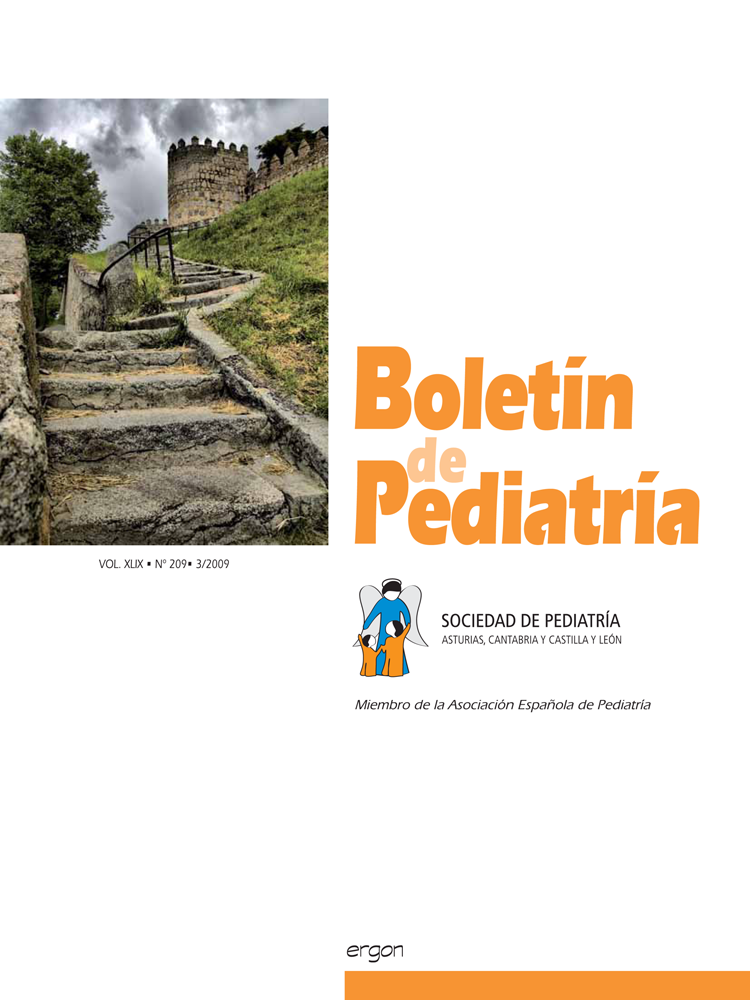Abstract
Although bronchial asthma is the most prevalent pediatric chronic disease, there are few studies based on the medical history of Primary Health Care (PHC). In this sense, knowing its clinical features will help to know the real magnitude asthma has in PHC.
Methods: Prevalence study of all the children who were diagnosed with asthma (295 children) assigned to four pediatric consultations of PHC in Cantabria (Northern Spain, 2478 children) and where clinical, allergic and epidemiological profile, taken from the data of their medical histories until September 2008, are shown.
Results: It was found a prevalence of diagnosed asthma of 11.90% (295 children), with variations from 14.4% to 7.4% depending on the pediatric consultations studied. The active asthma prevalence (asthma crisis during the last year) was of 8.3% (206 children). 59% of all asthmatic children were men. Concerning family antecedents, we must take into account that in some of the children´s parents we have found the presence of asthma in 30.5%, of allergic rhinitis in 40.3%, atopic dermatitis in 27.1% and habit smoking in 52.9%, with 55.3% of asthmatic children affected by passive smoking. 55.3% of the patients had suffered from bronchiolitis. 61% of the asthmatic ones associated allergic rhinitis and a 48.8% atopic dermatitis. Regarding the severity of asthma we found that 68.5% were occasional episodic asthma, 18.7% frequent episodic asthma, 12.5% moderate persistent asthma and 0.3% severe persistent asthma. 24.7% of the asthmatic children required emergency services during last year. September and October are the months with a higher prevalence of asthma attacks and we find another rise of asthma attacks in May. 59.6% did not have base treatment, 16.9% used inhaled corticoids, 22% combined treatment (‚2 of long action and inhaled corticoid), 2.4% montelukast and a 10.5% inmmunotherapy. 78.3% of the studied patients were atopics, 68.5% were allergic to dust mites and a 34.6% to grass pollen. Breastfeeding period of time of the population studied was of 90 days, the more the breastfeeding lasts, the more severe asthma was (120 days of persistent asthma against 60 days of occasional episodic asthma), (p=0,08). Only a 29.2% of the asthmatic children had made the spirometry and a 9.5% were sent to pneumology against the 30.5% who were sent to allergology The level of severity of asthma was associated with the presence of asthma in the father (OR=2,65, p=0,03), asthma in the brothers (OR=3,88, p< 0.001) and the antecedent of to have suffered bronquiolitis (OR=1,75, p=0,05). Also, the smaller age of the children was the only found factor that it predicted going to urgencies (OR=1,12, p=0,03).
Conclusions: The knowledge of the clinical-epidemiological profile of asthma in PHC will allow to improve the handling of this disease, to know its real impact, as well as to value its future tendency and severity. The existence of high prevalence of bronchial asthma by medical diagnosis of form similar to the ones found in the north of Spain is confirmed.

This work is licensed under a Creative Commons Attribution-NonCommercial 4.0 International License.
Copyright (c) 2009 Boletín de Pediatría
